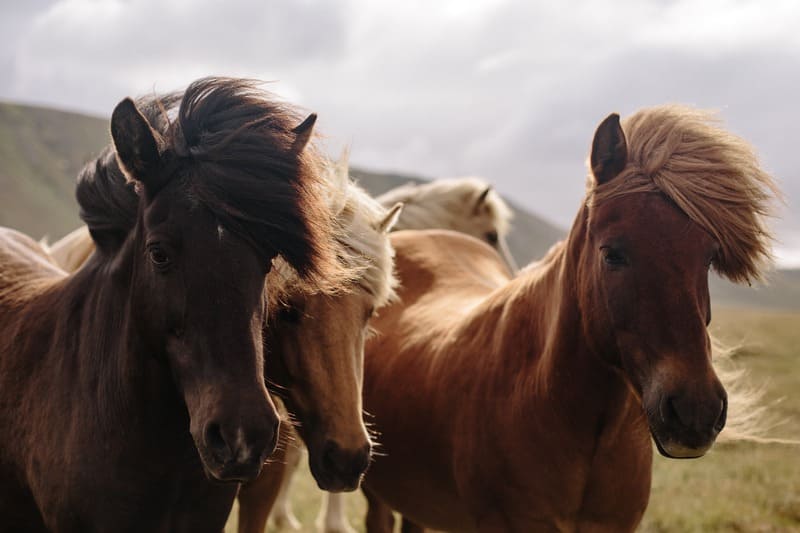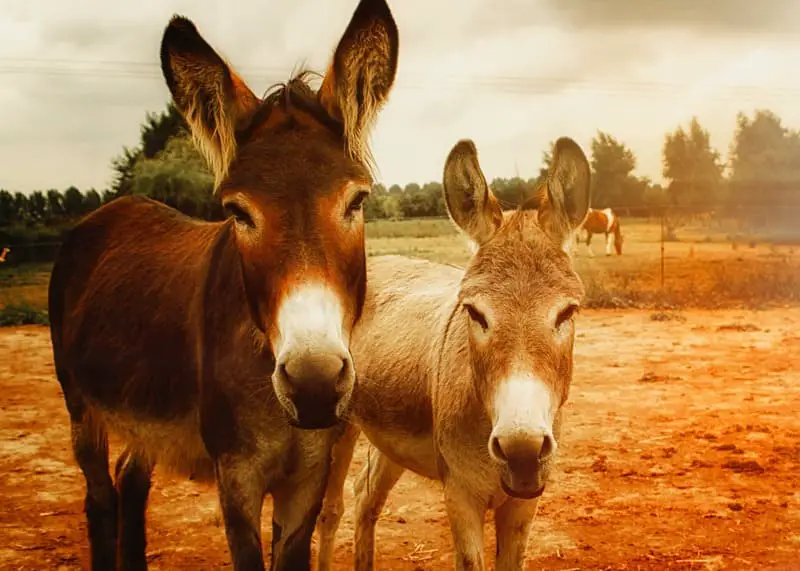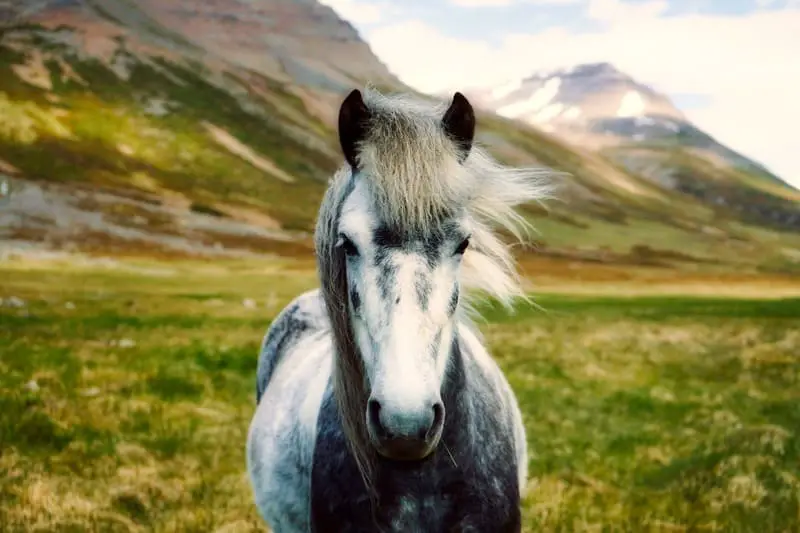Horses and donkeys, both members of the Equidae family, share a close evolutionary relationship, yet they are distinct species with unique characteristics and behaviors. Understanding the genetic, historical, and biological aspects of their relationship can shed light on the fascinating world of equines. In this comprehensive article, we will explore how horses and donkeys are related, examining their shared ancestry, differences, and the significance of their interactions with humans.

The Equidae Family: A Common Ancestry
To comprehend the relationship between horses and donkeys, we must delve into their shared ancestry within the Equidae family. The family Equidae, which is commonly referred to as equids, comprises various horse-like mammals, including horses, donkeys, zebras, and other closely related species.
Evolutionary History
Equids have a remarkable evolutionary history that dates back millions of years. The common ancestor of all modern equids was a small, forest-dwelling mammal known as Eohippus or Hyracotherium. These early ancestors of equids had features quite distinct from today’s horses and donkeys, such as a smaller size, toes instead of hooves, and adapted for a forested environment.
Over millions of years, the evolutionary trajectory of equids led to adaptations for life on grasslands. An increase in body size, a shift from multiple toes to a single hoofed toe, and the development of a complex digestive system for processing fibrous plant material were some of the significant changes.
The evolutionary path eventually gave rise to various species, including the ancestors of modern horses, donkeys, and zebras. Understanding this shared ancestry helps us appreciate the close relationship between horses and donkeys.
Classification and Differences
While horses and donkeys belong to the same family, they are different species with distinct physical and behavioral traits. The primary differences between horses and donkeys are as follows:
Species Classification
Horses are classified as Equus ferus caballus, while donkeys are classified as Equus africanus asinus. These Latin names indicate their respective species and subspecies.
Physical Differences
- Size: Horses are generally larger and taller than donkeys. Horses typically range from 14 to 18 hands (56 to 72 inches) at the withers, while donkeys are smaller, typically ranging from 9 to 15 hands (36 to 60 inches) at the withers.
- Coat Color: Both horses and donkeys can exhibit a wide range of coat colors and patterns, but some coat patterns are more commonly associated with one species than the other. For instance, the “dun” coat pattern, characterized by a sandy or gray body color with a dorsal stripe along the back, is more common in donkeys than in horses.
- Body Shape: Horses have a more streamlined and slender body shape, with long legs and a larger chest, adapted for running and carrying riders. Donkeys, on the other hand, have a more compact build, often with shorter legs and a stockier body.
- Tail: Horses typically have a flowing mane and tail, whereas donkeys’ manes and tails are shorter and coarser.
- Ears: One of the most noticeable differences between horses and donkeys is the shape of their ears. Horses have longer, pointed ears, while donkeys have shorter, more rounded ears.
- Leg Striping: Some donkeys may exhibit leg striping, which is not commonly found in horses.
- Voice: Donkeys are known for their distinctive braying, which is quite different from the neighing of horses.
Behavioral Differences
- Social Behavior: Horses are herd animals with a hierarchical social structure. They tend to have a single dominant leader (mare or gelding) within a herd. In contrast, donkeys have a different social structure and are known for their independence. They may form groups, but the hierarchy is often less rigid.
- Response to Threats: Horses tend to flee from threats or predators, relying on their speed and stamina. Donkeys, on the other hand, have a more defensive response to threats. They may stand their ground, kick, or bite to protect themselves.
- Learning and Training: Horses are known for their trainability and are often used in various equestrian activities. Donkeys, while intelligent, can be more cautious and may require different training techniques due to their independent nature.
- Nutritional Preferences: Donkeys have a more efficient digestive system that allows them to extract nutrients from fibrous plants more effectively. This makes them more suited to arid or semi-arid environments where forage may be scarce.
Reproductive Differences
Horses and donkeys can interbreed, resulting in a hybrid known as a mule (when a male donkey mates with a female horse) or a hinny (when a male horse mates with a female donkey). However, these hybrids are usually sterile, meaning they cannot reproduce.

The Role of Interspecies Hybridization
The ability of horses and donkeys to produce hybrid offspring has significant implications for their relationship. The two primary hybrids are mules and hinnies, and understanding their biology and uses can shed light on the interactions between these two species.
Mules
Mules are the offspring of a male donkey (jack) and a female horse (mare). They inherit the physical characteristics and behavioral traits of both parents, making them a unique combination of horse and donkey features.
Mules are known for their strength, endurance, and surefootedness. They are often used in agriculture, transportation, and recreational riding. Due to their hybrid nature, mules exhibit a wide range of sizes, coat colors, and abilities.
One of the most significant advantages of mules is their hybrid vigor, which often results in greater overall health and hardiness compared to purebred horses or donkeys. They are also known for their intelligence and adaptability.
Hinnies
Hinnies are the offspring of a male horse (stallion) and a female donkey (jenny). Unlike mules, hinnies are less common, and there are fewer known variations in their size, coat colors, and abilities.
While hinnies share some of the hybrid vigor associated with mules, they may have slightly different characteristics due to their unique genetic makeup. Like mules, hinnies are typically sterile and cannot reproduce.
Hybrid Sterility
The sterility of mules and hinnies is a result of differences in the number of chromosomes between horses and donkeys. Horses have 64 chromosomes, while donkeys have 62. As a result, mules and hinnies inherit a combination of 63 chromosomes, which prevents them from producing viable gametes (sperm and eggs). This means they cannot reproduce and have led to the saying, “Mules are sterile, but not stupid.”
Practical Uses of Mules and Hinnies
Mules and hinnies have been integral to human societies for centuries due to their unique characteristics. They are valued for their strength, endurance, and intelligence, which make them suitable for various tasks, including:
- Agriculture: Mules and hinnies have been used for plowing fields, pulling carts, and working in agricultural settings. Their ability to handle heavy loads and rough terrain is a significant advantage.
- Transportation: Mules and hinnies have been employed as pack animals, carrying goods and people across challenging terrains. Their surefootedness and stamina make them valuable in this role.
- Recreation: Mules and hinnies are also popular for recreational riding and trail riding. They are known for their calm and patient temperament, making them suitable for riders of all levels.
- Wilderness Work: In wilderness areas, mules and hinnies are used by park rangers and rescue teams to access remote locations and transport equipment.

Historical and Cultural Significance
Horses and donkeys have played essential roles in human history and culture, both separately and in their interactions. Their historical and cultural significance highlights the importance of understanding their relationship.
Domestication
The domestication of horses and donkeys significantly impacted human societies. Horses were domesticated around 4000-3500 BCE and revolutionized transportation, agriculture, and warfare. Donkeys, believed to have been domesticated even earlier, around 4000 BCE, became valuable as pack animals, particularly in arid regions. Their ability to thrive in harsh conditions made them essential for trade and travel.
Cultural Symbolism
Both horses and donkeys have had a profound impact on human cultures and have often been symbolically represented in various ways:
- Horses have been symbols of power, nobility, and freedom in many cultures. They are often depicted in art, literature, and mythology as majestic and powerful creatures.
- Donkeys have been associated with humility, patience, and endurance. They have been depicted as working animals that support the livelihood of many people worldwide. The humble and hardworking nature of donkeys is often celebrated in literature and folklore.
Interactions in Cultures
Horses and donkeys have coexisted in many cultures, and their interactions have been influenced by the unique characteristics of each species. In some regions, particularly in arid or mountainous areas, both horses and donkeys are valued for their specific roles. Horses might be used for transportation and riding, while donkeys are used for carrying goods and supplies.
The hybrid offspring of horses and donkeys, such as mules and hinnies, have also played significant roles in cultures worldwide. They have been employed in various labor-intensive tasks, including plowing fields, transporting goods, and supporting the economies of many communities.
Role in Warfare
Horses have a storied history in warfare, serving as cavalry mounts for many armies throughout history. Their speed and strength made them valuable in combat. Donkeys, while not typically used as mounts, played a critical role in supporting armies by carrying supplies, equipment, and wounded soldiers.
Impact on Exploration and Trade
Horses and donkeys significantly impacted the exploration and trade routes of the ancient world. Horses enabled explorers and conquerors to cover vast distances, while donkeys provided essential transportation in difficult terrains. The Silk Road, for example, relied on both horses and donkeys to facilitate trade between the East and West.
The Significance of Equids in Modern Society
Today, horses and donkeys continue to play vital roles in modern society, both in developed and developing countries. Their contributions extend beyond labor and transportation to include sports, therapy, and recreation.
Horses in Sports
Horses are celebrated for their performance in various equestrian sports, such as show jumping, dressage, eventing, and racing. The bond between horses and riders is at the heart of these sports, showcasing the unique partnership that has evolved between humans and horses over thousands of years.
Equine Therapy
Horses are also employed in therapeutic settings to assist individuals with physical, emotional, or psychological challenges. Equine-assisted therapy, often referred to as equine therapy or horse therapy, uses horses to help individuals improve their physical and emotional well-being. The interactions between humans and horses can be profoundly therapeutic, fostering trust, empathy, and emotional healing.
Conservation Efforts
In regions where wild equids, such as wild horses and zebras, exist, conservation efforts are critical to preserving these species and their habitats. Ensuring the survival of these unique animals is not only important for ecological reasons but also for maintaining the genetic diversity of the Equidae family.
Donkeys in Developing Countries
Donkeys continue to be invaluable in many developing countries where they support the livelihoods of countless people. They are used for carrying water, firewood, and agricultural produce. Their strength and endurance make them indispensable for tasks that would be challenging or impossible for other animals or machinery.
Conclusion
Horses and donkeys share a deep and complex relationship rooted in their shared ancestry within the Equidae family. Despite their differences in physical appearance, behavior, and genetic makeup, both species have played pivotal roles in human history, culture, and modern society. Their interactions have been influenced by the unique qualities of each species, and their hybrid offspring, mules and hinnies, have contributed to a variety of human activities.
Understanding the relationship between horses and donkeys helps us appreciate the diversity and significance of equids in our world. Whether they are celebrated for their speed, strength, or therapeutic value, these remarkable animals continue to hold a special place in the hearts of people around the globe. The bond between humans and equids serves as a testament to the enduring connection between our species and the remarkable members of the Equidae family.
